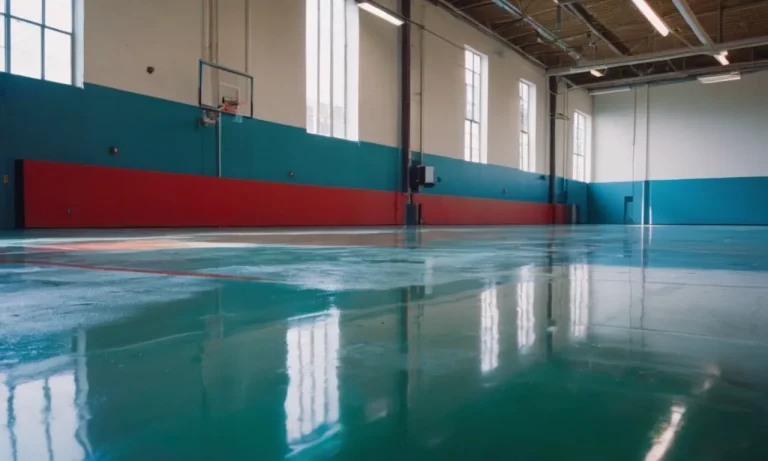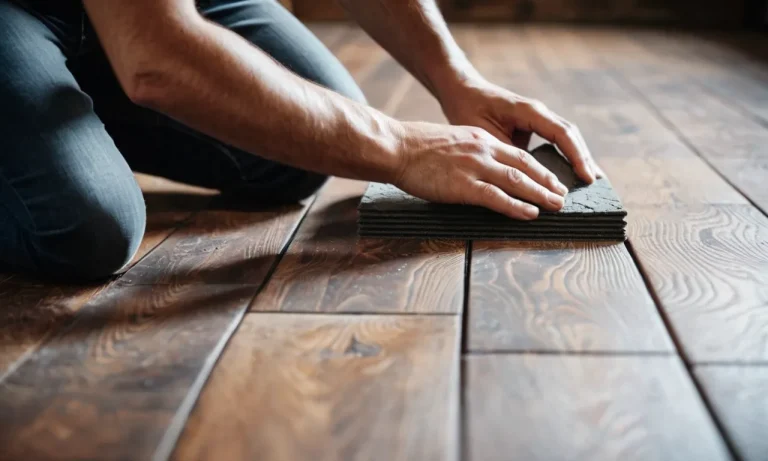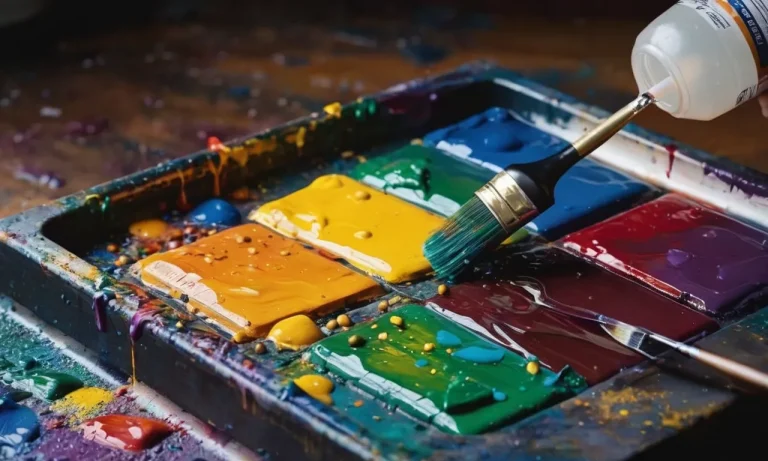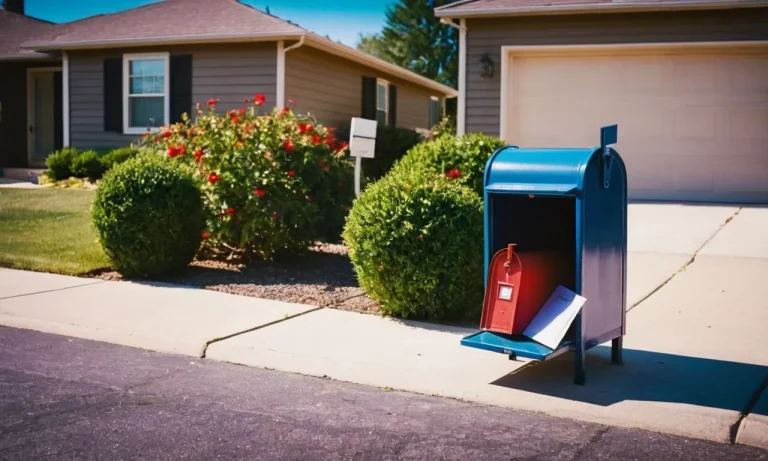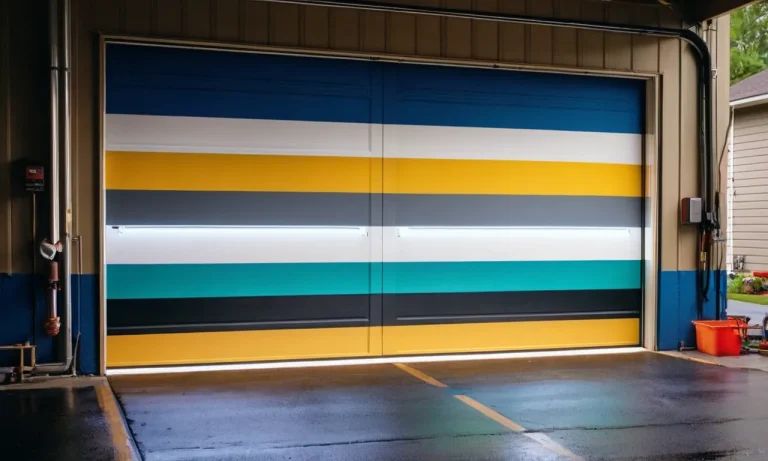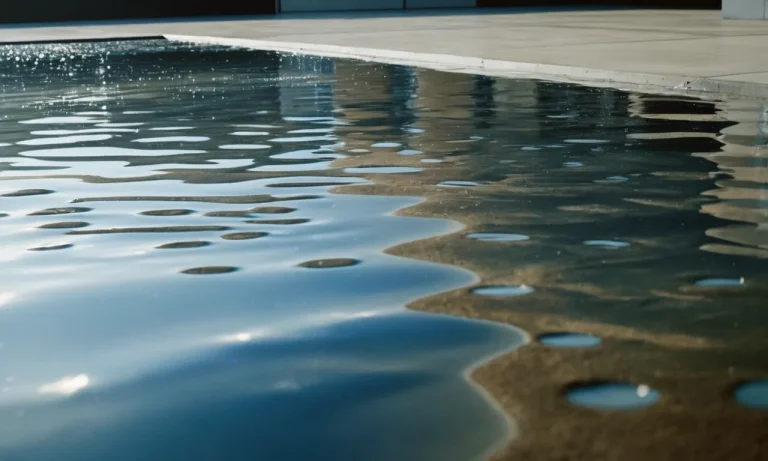Can You Mud Over Paint? A Detailed Guide
If you’re looking to update the look of a room in your home, you may be wondering if you can simply mud over the existing paint instead of going through the lengthy process of removing it. Mudding or applying joint compound directly over paint is possible in some cases, but there are a few factors to consider first.
If you’re short on time, here’s a quick answer: Mudding over paint is possible in some cases, but it’s not always recommended. For best results, remove loose or peeling paint first. Only mud over matte paints, not glossy finishes. Use a high-quality primer between the paint and mud.
Consider skim coating instead for smoother coverage over paint.
Can You Mud Right Over Paint?
If you’re thinking about applying mud over existing paint, the answer is: it depends. While it is possible to mud over paint in certain situations, there are important factors to consider to ensure a successful outcome.
It Depends on the Type of Paint
The type of paint on the surface plays a crucial role in determining whether or not you can mud right over it. Generally, mudding over oil-based paints or glossy finishes is not recommended. These types of paints can create a barrier that interferes with the adhesion of the mud.
However, if the surface has been painted with a latex-based or water-based paint, it is typically safe to mud over it. These types of paints have a more porous surface, allowing the mud to adhere properly.
Gloss and Semi-Gloss Paints Cause Problems
Gloss and semi-gloss paints, with their smooth and shiny finish, pose challenges when it comes to mudding. The slick surface of these paints makes it difficult for the mud to adhere properly. As a result, the mud may not dry evenly or may crack and peel over time.
It is advisable to sand the glossy surface before mudding to create a rougher texture for better adhesion. Applying a primer specifically designed for glossy surfaces can also improve the chances of successful mudding.
Matte or Flat Paints Work Best
If you have a matte or flat painted surface, you’re in luck! These types of paints have a more textured surface, making them ideal for mudding. The rougher surface allows the mud to grip and adhere effectively.
Before mudding over matte or flat paint, it is still important to clean and prepare the surface properly. Remove any dirt, grease, or loose paint, and ensure the surface is dry and smooth.
Pro Tip: It’s always a good idea to test a small area before applying mud over the entire painted surface. This will help you assess the adhesion and drying properties of the mud and determine if any additional preparation is needed.
How to Prepare Painted Walls Before Mudding
If you’re looking to give your walls a smooth and flawless finish, mudding over paint can be a great option. However, before you begin the mudding process, it’s important to properly prepare the painted walls to ensure the best results. Here are some steps to follow:
Clean and Sand the Surface
The first step in preparing painted walls for mudding is to clean and sand the surface. Use a mild detergent and warm water to remove any dirt, grease, or grime from the walls. Once the walls are clean and dry, use sandpaper or a sanding block to gently roughen up the surface.
This will help the mud adhere better to the walls and create a smoother finish.
Fill Any Holes or Imperfections
Before mudding, it’s important to fill any holes or imperfections in the painted walls. Use a spackling compound or joint compound to fill in small holes or cracks. For larger holes, you may need to use a patching kit.
Allow the compound to dry completely and then sand it down until it’s smooth and level with the surrounding wall.
Remove Loose or Peeling Paint
If you notice any loose or peeling paint on the walls, it’s crucial to remove it before mudding. Use a scraper or putty knife to gently scrape away the loose paint. Be careful not to damage the underlying surface. Once the loose paint is removed, sand the area to create a smooth surface.
Apply Primer
Before you start mudding, it’s recommended to apply a coat of primer to the painted walls. Primer helps to create a uniform surface and improves the adhesion of the mud. Apply the primer using a roller or brush, making sure to cover the entire wall evenly.
Allow the primer to dry completely before moving on to the mudding process.
Remember, proper preparation is key when mudding over painted walls. By following these steps, you can ensure that your walls are ready for a flawless and professional-looking finish.
Applying Joint Compound Over Paint
When it comes to giving your walls a smooth and flawless finish, applying joint compound over paint can be a viable option. Whether you want to cover up imperfections or create a new textured look, this detailed guide will walk you through the process step by step.
Use Lightweight Mudding Compound
When selecting a mudding compound for applying over paint, it’s important to choose a lightweight option. Lightweight compounds are easier to work with and provide a smoother finish. They are also less likely to crack or sag over time.
Look for products labeled as lightweight or all-purpose joint compound.
Apply a Thin, Even Coat
Before applying the joint compound, make sure to clean the surface of the painted wall thoroughly. Use a damp cloth or sponge to remove any dirt or dust. Then, using a putty knife or trowel, apply a thin, even coat of joint compound over the painted area.
Start from the top and work your way down, using smooth and consistent strokes.
Let Each Coat Fully Dry Before Adding More
After applying the first coat of joint compound, it’s important to let it dry completely before adding additional coats. This will ensure a strong and durable finish. The drying time can vary depending on the temperature and humidity level in your area.
It’s best to refer to the manufacturer’s instructions for specific drying times.
Sand Between Coats
To achieve a smooth and seamless finish, sanding between coats is crucial. Once the first coat is completely dry, use a fine-grit sandpaper to gently sand the surface. This will help remove any imperfections and create a smooth base for the next coat.
Remember to wipe away any dust before applying the next layer of joint compound.
Consider a Final Skim Coat
If you want to achieve a professional-looking finish, consider applying a final skim coat. A skim coat is a thin layer of joint compound applied over the entire surface to create a smooth and uniform appearance.
This step will help hide any remaining imperfections and give your walls a flawless finish.
Remember, applying joint compound over paint requires patience and attention to detail. Take your time, follow the steps carefully, and you’ll be rewarded with beautiful, professionally finished walls.
Mudding vs. Skim Coating Over Paint
When it comes to giving your walls a fresh new look, you may be wondering if you can simply mud over existing paint. While this may seem like a convenient solution, it’s important to understand the key differences between mudding and skim coating over paint.
Mudding Leaves a Textured Finish
Mudding involves applying a layer of joint compound or drywall mud over the existing paint. This technique is commonly used to repair damaged walls or to achieve a textured finish. By applying multiple layers of mud and using different techniques, such as stippling or knockdown, you can create unique textures and patterns on your walls.
However, it’s worth noting that mudding over paint may not always be the best option if you’re looking for a smooth and seamless finish. The texture created by mudding can be more difficult to paint over, as it may require additional sanding and priming to achieve a consistent look.
Skim Coating Creates a Smoother Surface
Skim coating, on the other hand, involves applying a thin layer of joint compound or drywall mud over the existing paint. This technique is ideal for achieving a smooth and even surface, perfect for painting or wallpapering.
Skim coating helps to hide imperfections in the wall and create a fresh canvas for your desired finish.
While skim coating may not provide the same level of texture as mudding, it offers a more versatile base for various paint finishes. It allows for a seamless transition between paint colors and provides a uniform surface for a professional-looking result.
Skim Coating Takes More Time and Effort
It’s important to consider the time and effort required for each technique. Mudding can be a quicker process, especially if you’re going for a textured finish. However, if you’re aiming for a smooth and seamless surface, skim coating may take more time and effort.
Skim coating requires careful application and smoothing of the joint compound to achieve a flawless result. It may also involve multiple layers and sanding in between to ensure a smooth finish. While it may take more time, the end result can be well worth the extra effort.
Ultimately, the decision between mudding and skim coating over paint depends on your desired outcome and the condition of your walls. If you’re looking for a textured finish or need to repair damaged walls, mudding may be the way to go.
However, if you prefer a smooth and seamless surface for painting or wallpapering, skim coating is likely the better option.
Remember to take into account the time and effort required for each technique, and don’t hesitate to consult with a professional if you’re unsure about the best approach for your specific project.
Tips for Successful Results Mudding Over Paint
Mudding over paint can be a great way to update the look of a room without having to remove all the existing paint. However, it’s important to follow the right steps to ensure successful results. Here are some tips to keep in mind:
Use High-Quality Primer
Before starting the mudding process, it’s essential to use a high-quality primer specially designed for use on painted surfaces. This will help the mud adhere properly and provide a smooth and even finish.
Look for a primer that is specifically labeled for use on painted surfaces, as this will ensure the best adhesion and longevity of your mud.
Take Your Time Applying Thin, Even Layers
When mudding over paint, it’s important to take your time and apply thin, even layers of mud. This will help prevent any unevenness or bulging in the final result. Using a putty knife or trowel, apply the mud in thin layers, making sure to spread it evenly across the painted surface.
Don’t try to apply too much mud at once, as this can lead to cracking and other issues.
Let Each Coat Fully Dry Before Adding Another
Allowing each coat of mud to fully dry before adding another is crucial to achieving a smooth and flawless finish. Depending on the type of mud you’re using, this can take anywhere from a few hours to overnight.
Be patient and resist the temptation to rush the drying process, as this can lead to problems later on.
Lightly Sand Between Coats
To ensure a seamless transition between each coat of mud, it’s important to lightly sand the surface before applying the next layer. This will help smooth out any imperfections and create a more even surface for the next coat of mud.
Use a fine-grit sandpaper and be gentle to avoid damaging the underlying paint or creating deep scratches.
Finish with a Skim Coat for Best Results
To achieve the best results when mudding over paint, it’s recommended to finish with a skim coat. A skim coat is a thin layer of mud that is applied over the entire surface to create a smooth and uniform finish.
This final step will help hide any remaining imperfections and give your painted surface a professional-looking appearance.
Remember, mudding over paint requires precision and patience. By following these tips, you can achieve successful results and transform the look of your room with ease.
Conclusion
Mudding or applying joint compound directly over existing paint on your walls is possible in some cases. However, for best results it’s recommended to properly prepare the painted surface first. Matte or flat paints work better than glossy paints under joint compound.
Be sure to apply a high-quality primer before mudding to help the layers adhere. Use a skim coat technique to finish over painted walls for a smooth surface. Taking your time to add thin, even coats of lightweight compound and letting each fully dry is key to avoiding cracks and an uneven finish when mudding over paint.


